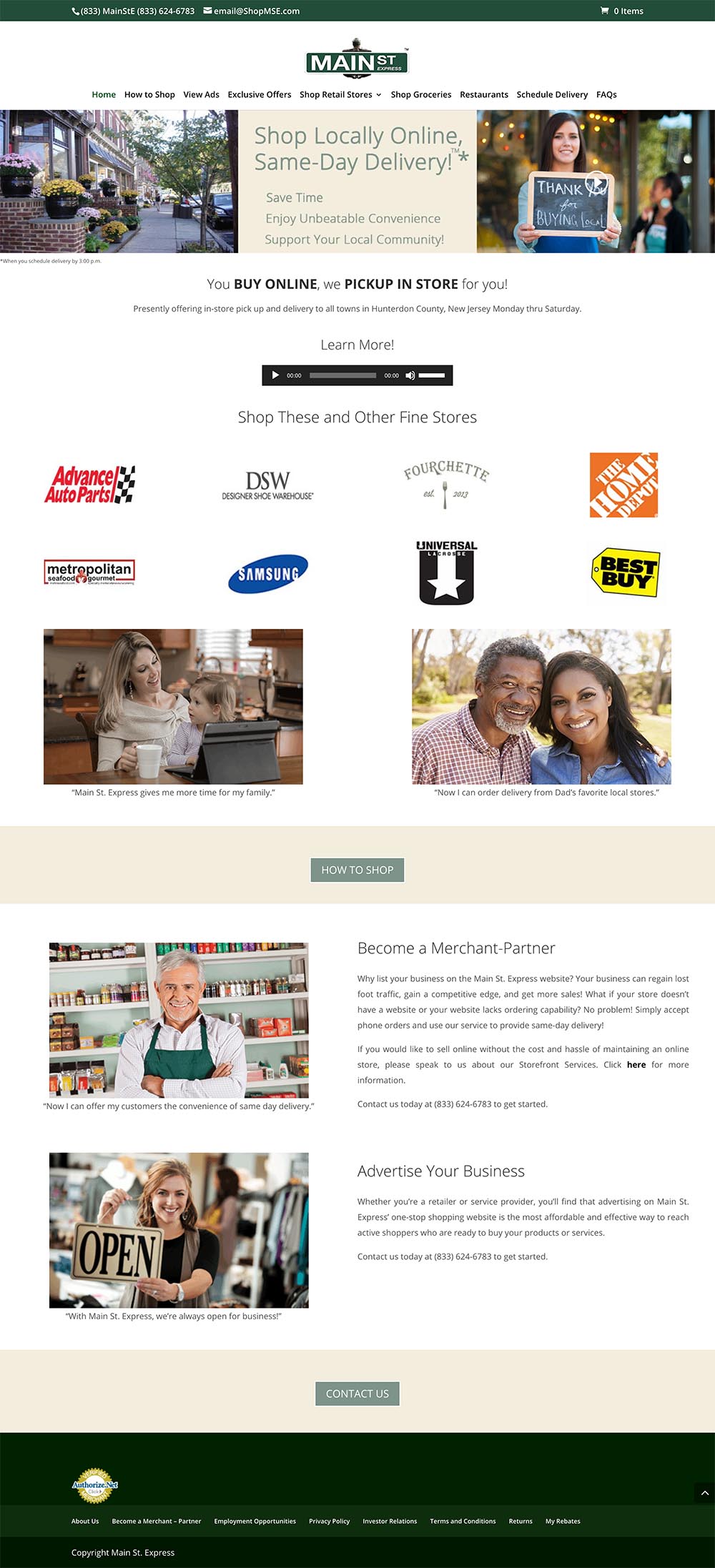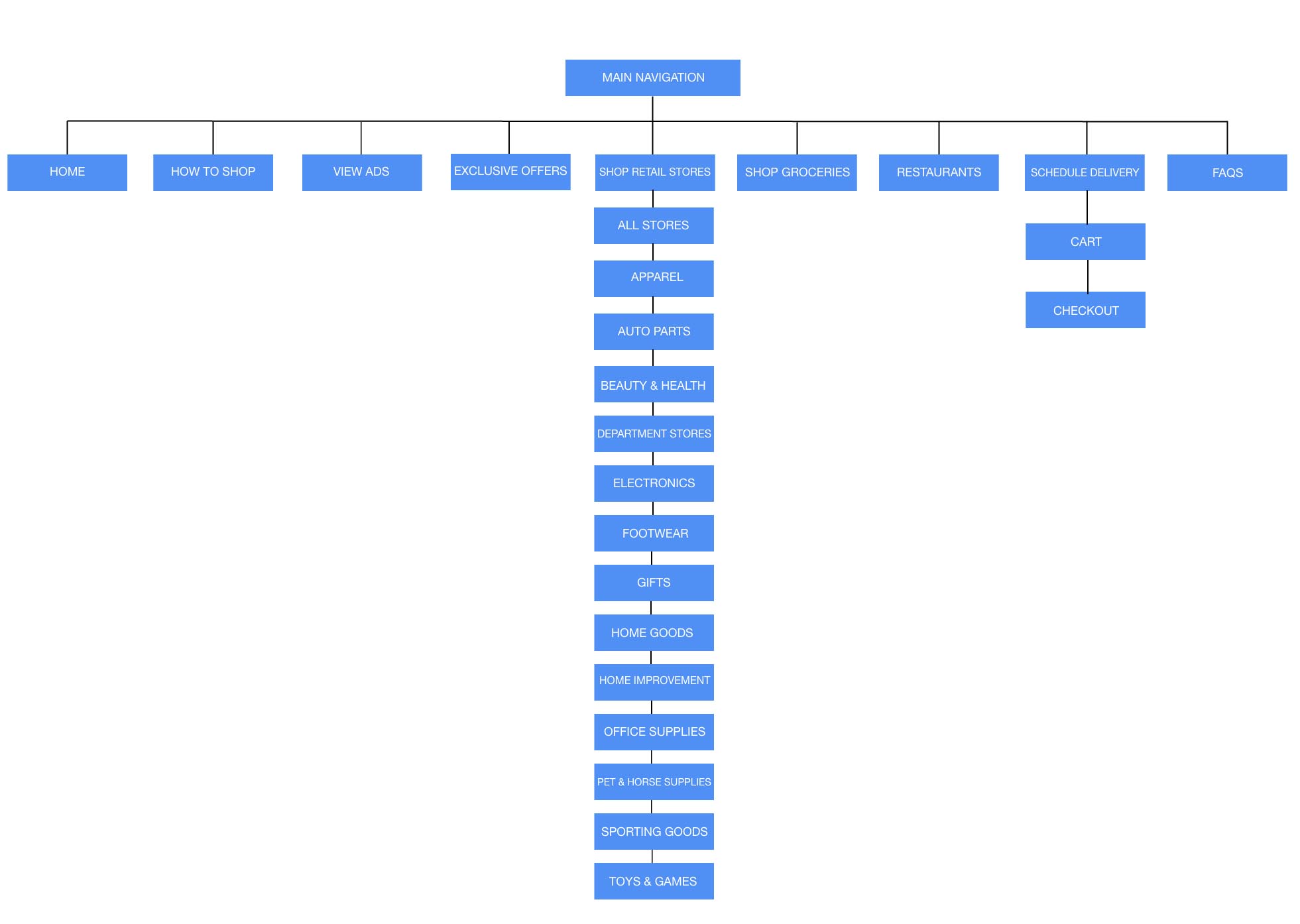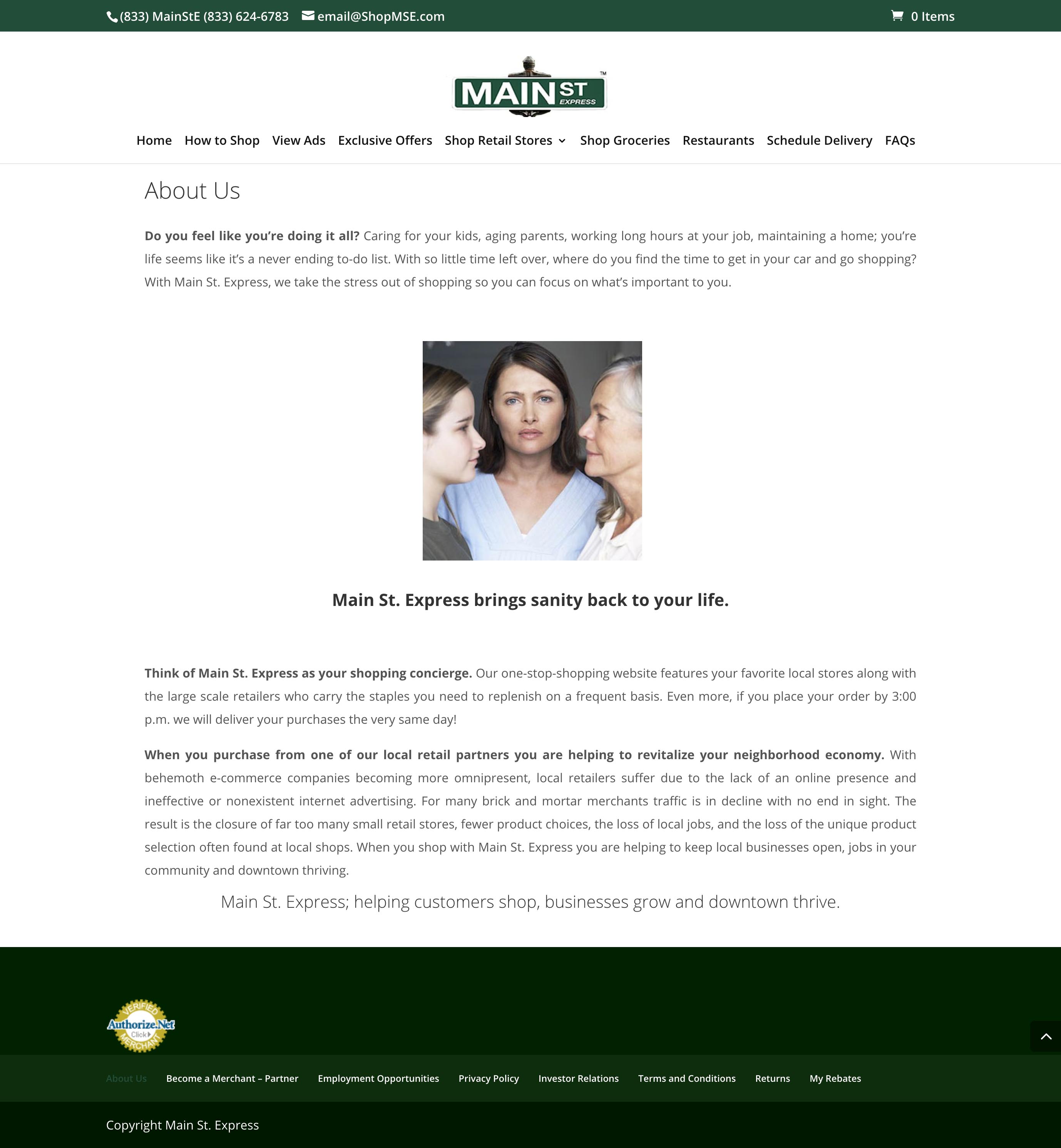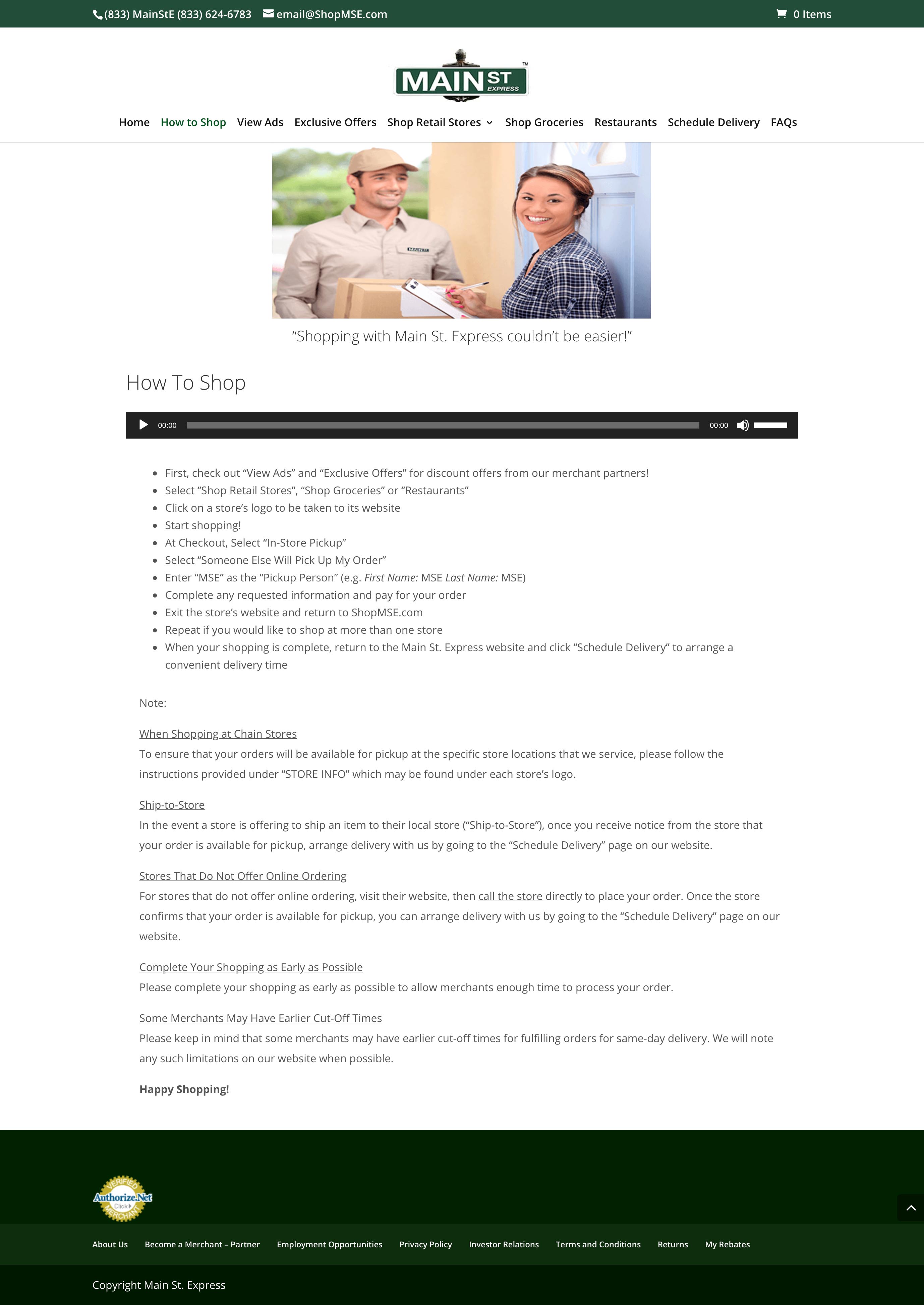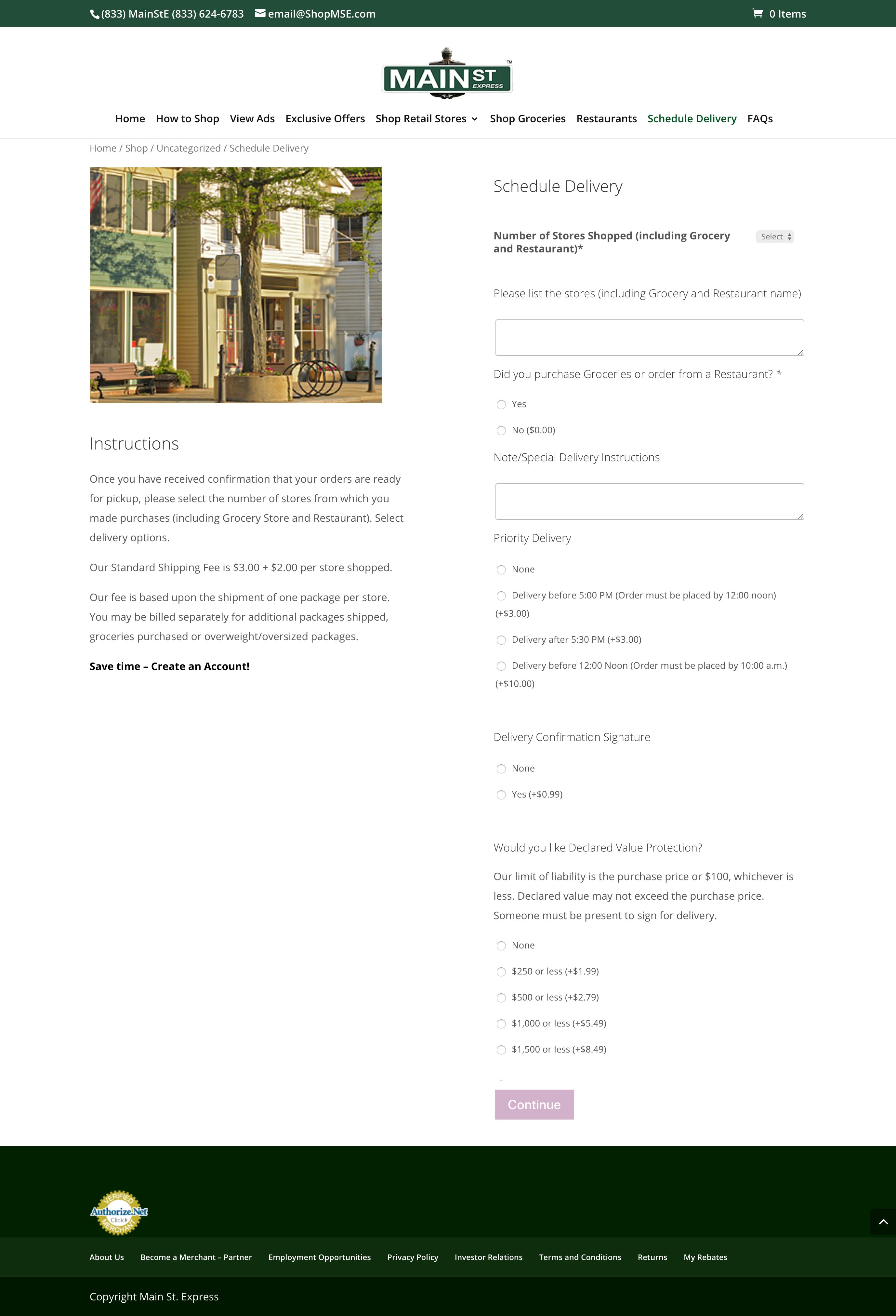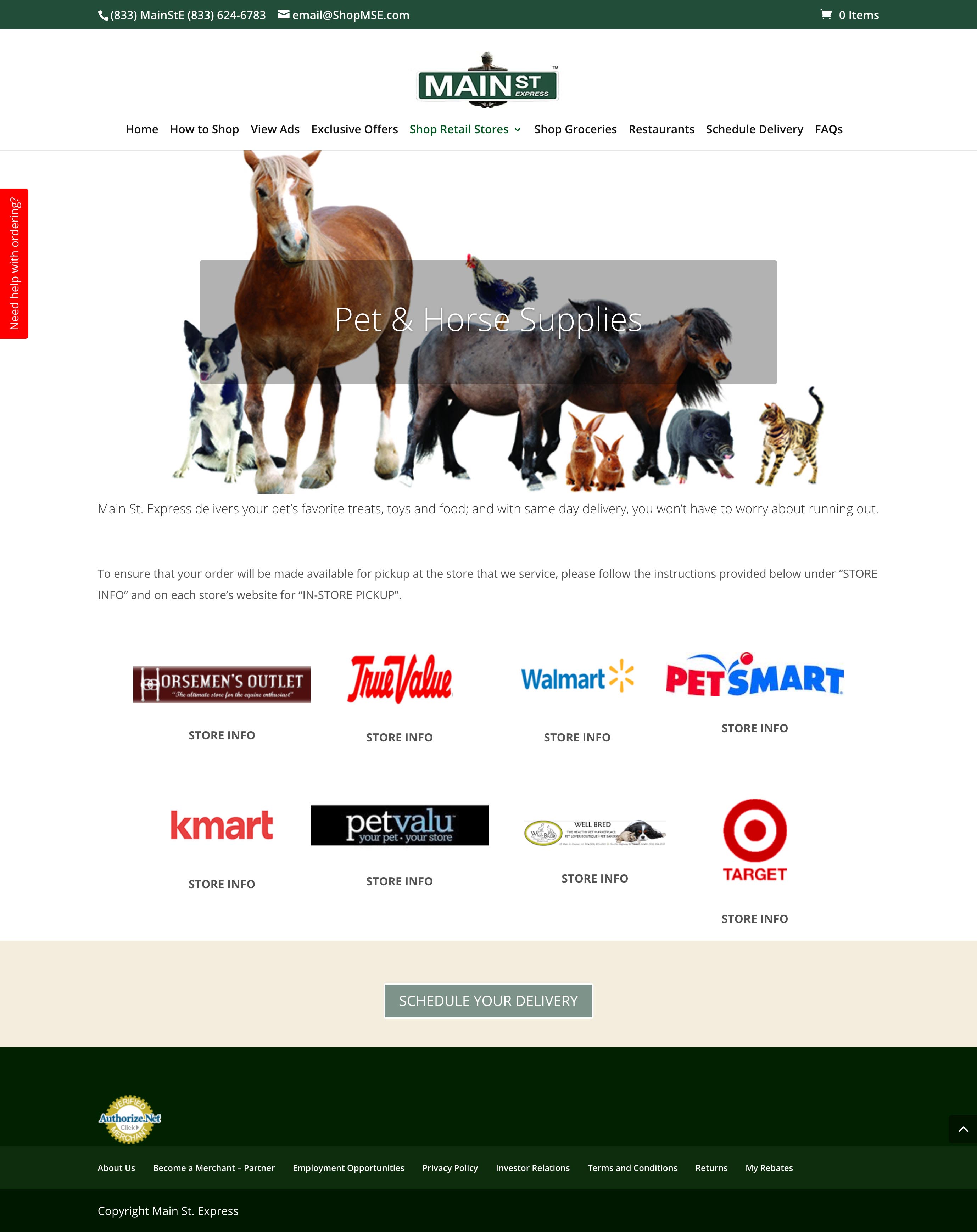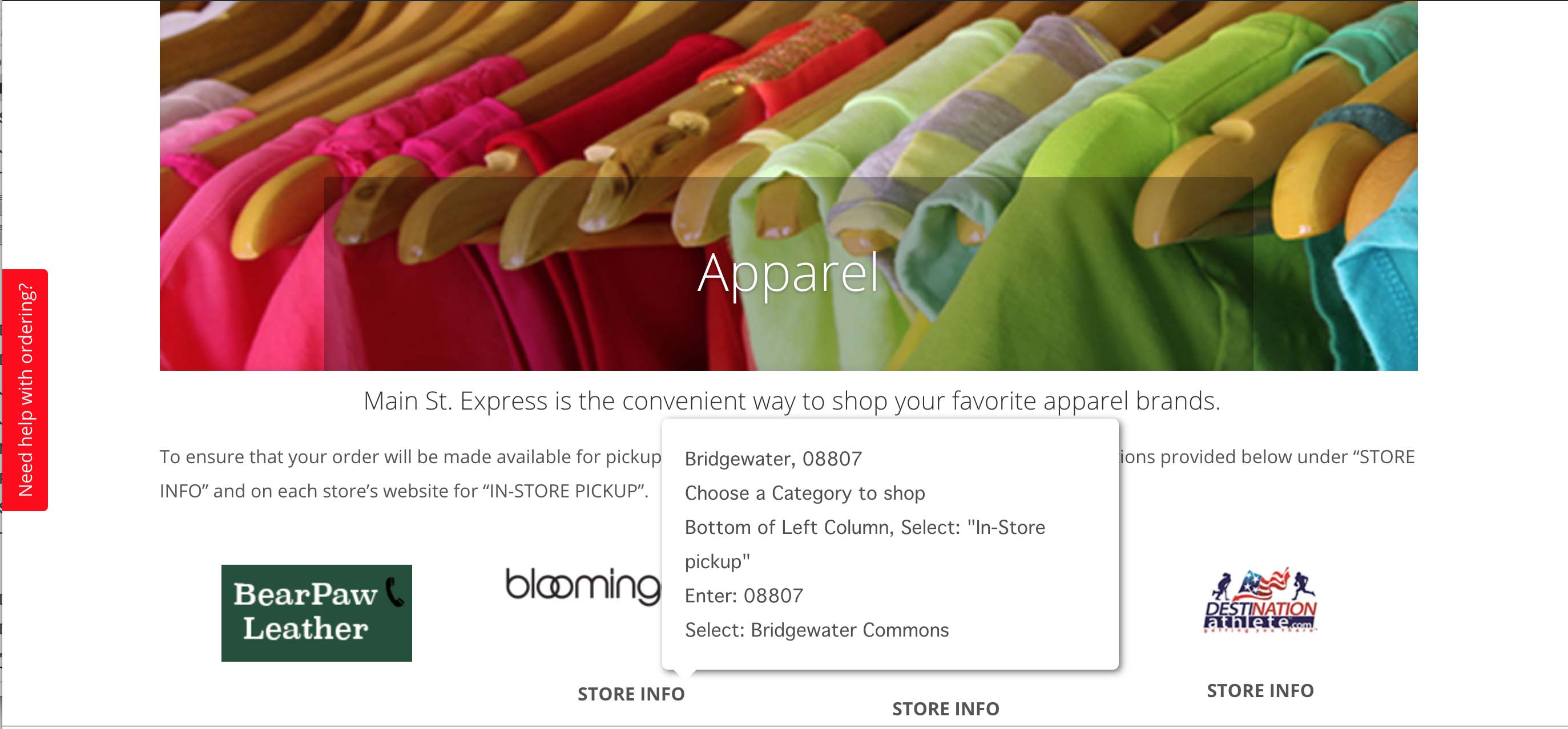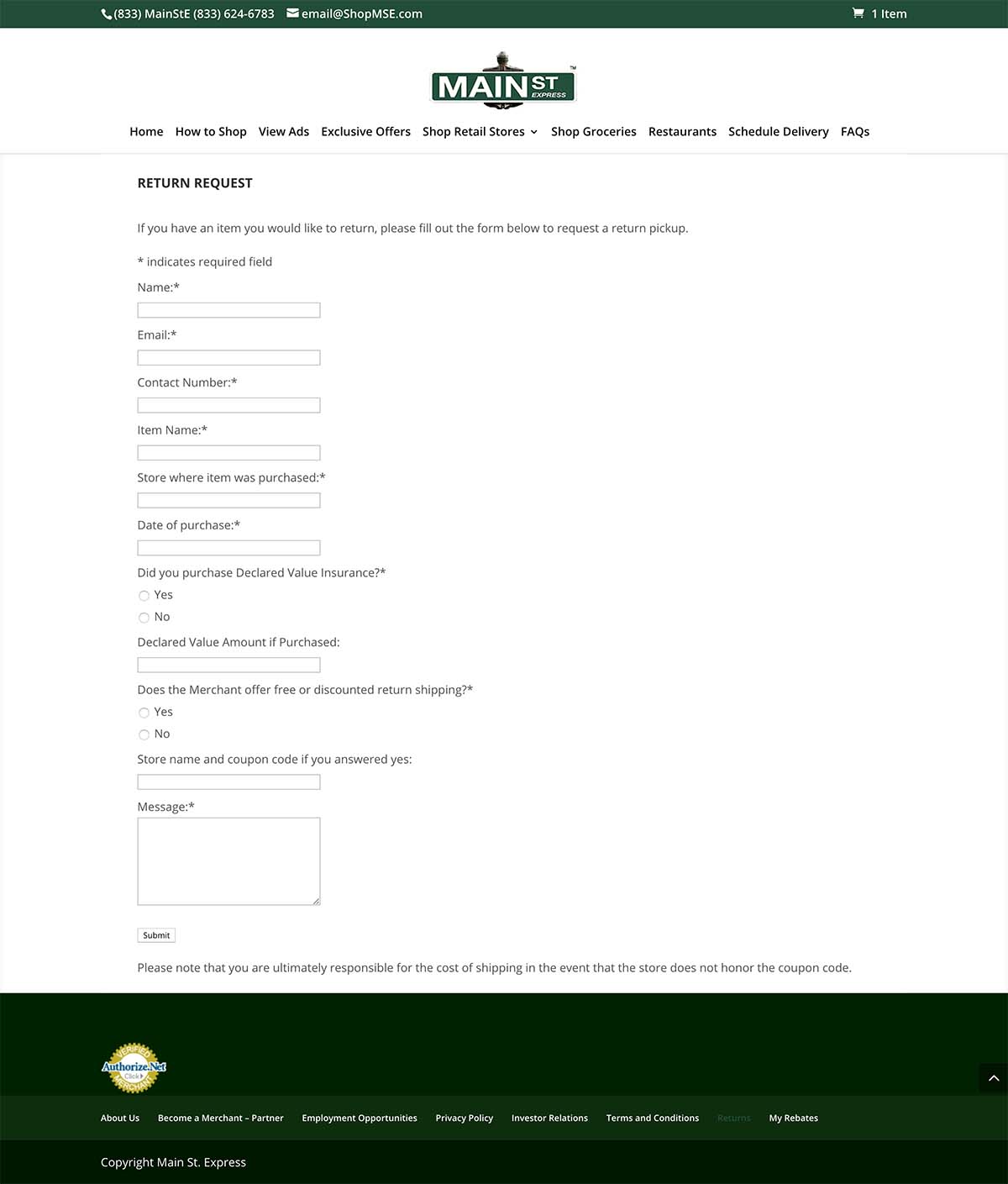Client: Main St. Express
Designed in 2015
A local home delivery service supporting local stores
Highlights: E-Commerce Design, Form Design, Research, Personas, Information Architecture, Visual Design, UX Design, Content Writing
Project: Website for a new service that allows residents of Hunterdon County, NJ to order online from their favorite local stores and receive same day delivery to their home.
My role:
- End-to-end design of website using WordPress
- User experience
- Persona development
- Site architecture
- Content writing
- UX writing
- Logo design
- Typography
- Image editing
Tools
- WordPress for the website
- HTML5 & CSS3 for theme customization
- Adobe XD for wireframes
- Adobe Photoshop CC for image editing
Background & the Problem
Note: This project was conceived and designed before Amazon delivery, Uber Eats, Instacart and other home delivery services were available.
Main St. Express is a new concierge home delivery service. It’s purpose is two-fold; to enable shoppers to buy online from local stores and have their orders delivered to them, and to help local stores sell to more customers. Big-box retailers have become increasingly more popular over the last two decades and along with Amazon.com, they have made shopping easier and more convenient due to large product inventory, lower prices and fast delivery. More stores are offering online ordering with in-store pickup and some some stores like Walmart, now offer home delivery. Where does this leave the small downtown merchant?
Many downtown merchants are suffering. They can’t match the convenience and product selection of stores like Amazon.com. Stores such as Home Depot have driven the local hardware store out of business. With less foot traffic in their stores, the lack of the buying power of the big stores, and often with no online store, smaller merchants struggle to make a profit.
Main St. Express was conceived to bridge the gap between shoppers who want convenience and the local stores that want to sell to them. They can shop for groceries, order takeout and buy from both major retailers and small local businesses. Unlike other delivery services, Main St. Express shoppers can order from multiple stores and receive their packages in a single delivery from a Main St. Express delivery person. This gives the shopper the experience of having their own personal shopper.
The UX challenge in providing a service with the number of shopping options and delivery options was how to make the website simple to use while being able to clearly explain how to use the service, all without overwhelming the shopper with too many details and steps. A second issue was mobile UX. With users visiting external websites to do their shopping and then having to return to the Main St. Express website, more than one screen would need to be open at a time. Rather than design a second scaled down mobile version, it was decided to emphasize the desktop experience. This decision was based on the age group of the primary users, who would be more likely to use desktop to do their shopping. Project budget was also a factor in the decision to focus on the desktop experience.
Who are the users?
- Moms with small children
- Working women with the added responsibilities of home and family
- Elderly people who can no longer drive
- People who don’t want the hassle of driving and finding parking
- People who don’t mind paying for the convenience of home delivery
From the users mentioned above, I developed a user persona based on the busy career woman since she is a composite of all of the users.
User Persona

Ellen
Age: 47
Job: Marketing Manager
Income: $100,000
Her problem: There isn’t enough time in her day to shop due to her many responsibilities
Her story: Ellen works at a large pharmaceutical company. She has thirty-five people that report to her and she occasionally has to travel to trade shows which takes her away from her family for a week at a time. She has two daughters at home who are in middle school and both are involved with sports. Her husband works in sales and travels frequently for work. Ellen’s mom is elderly and is having trouble caring for herself and recently stopped driving. After her job, Ellen’s priority is her family. After a hectic day, shopping is the last thing she wants to do.
What she says: “Some days I feel like I need two of me. I’m working ten hours a day, my girls both play soccer and my mom needs help getting around. I’m often too tired after work to go shopping so I usually get takeout on the way home. I don’t enjoy dealing with the traffic and parking in town on the weekends but I feel guilty making mom take the senior bus to the grocery store to go shopping. I need help!”
What is her goal: “I would like to have all of my shopping delivered to me when I need it. I would also like to be able to order the things my mom needs and have them delivered to her so she doesn’t have to do it herself. This would give me some time to relax and I would feel better knowing mom doesn’t have to go shopping alone.”
Key Learnings
Presenting the content in a way that users could understand without having them to complete too many steps to reach their goal was challenging. Based on user research, I knew there was going to be a range of user ages that would benefit from the service but with varying comfort levels when it came to using technology. I had to manage the client’s desire to explain in minute detail how to use the service while not making the page layout too busy looking. I also didn’t want the less “tech inclined” user to get confused if they couldn’t access the instructions they needed to use the service.
I made the decision to use tool tips for each store logo that were only visible if the user put their clicker over the words “Store Info.” This way, the user could easily access the information if they needed it. I also added a sticky widget on each store category page that linked to a help form. I think that adding Live Chat would further improve user experience. I also added an intro video and audio explaining how the service works to the homepage and “About Us” page. I think having customer testimonial videos would further help users understand how to use and benefit from the service.
Building this website highlighted the changes to the retail landscape. While additional stores were added during the design process, there were other stores, both national chains and local shops that either closed or moved. This required routine checks of stores websites to make sure they were still in business and that the store links were still correct. I knew that bad links would have a very negative impact on user experience.
Upon completion of the website, I handed it off to the client with some suggestions for future enhancements to the service including adding single store merchant websites, adding a visiting nurse service option, and a marketplace website for local stores.
User response to the service has been very good, and the client has added additional delivery drivers to meet demand.

